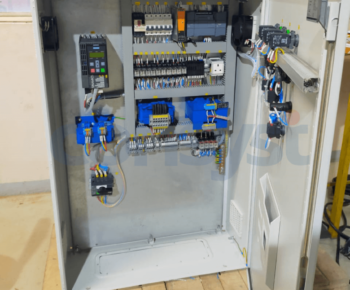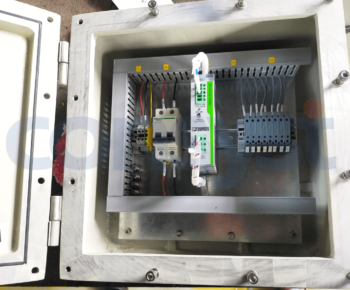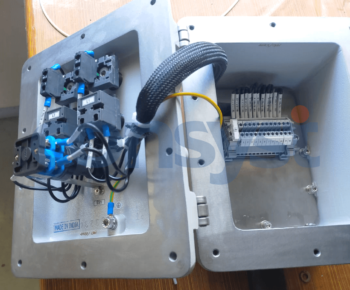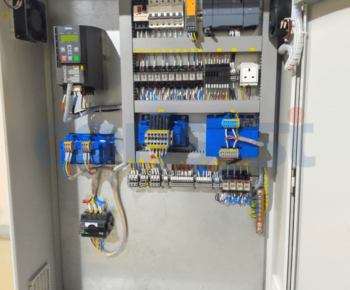Case Study: Closed-Loop Control Optimization for Industrial Agitators
Scope: Design, Engineering, Supply, and Commissioning of a Closed-Loop Agitator Motor Control System Featuring VFD and PLC Integration
Background:
We implemented a control system to manage the agitator motor for a chemical reactor for an industrial customer. This system is designed for the precise mixing of two compatible liquids with a viscosity of up to 520 centipoises (cP), with the objective of achieving complete homogeneity within a 15-minute timeframe. The project implemented a closed-loop control system that seamlessly integrated a Variable Frequency Drive (VFD) and a Programmable Logic Controller (PLC).
The customer asked both local and remote-control capabilities for managing the agitator mixer’s operations. This dual-control functionality not only facilitated day-to-day operations but also ensured that adjustments could be made from a centralized control room, enhancing operational efficiency and control.
We have delivered an all-in-one panel that housed both the Variable Frequency Drive (VFD) and Programmable Logic Controller (PLC). This integration into the existing Distributed Control System (DCS) was a critical step in streamlining the control and monitoring of the agitator mixer.
System Description:
The system consisted of a 7.5 KW VFD,1800RPM agitator motor and a PLC based control system, which was meticulously designed to ensure both efficiency and safety during operations. Its primary objective was to safeguard personnel and prevent overheating incidents. To achieve this, Positive Temperature Coefficient (PTC) sensors were seamlessly integrated into the PLC, providing real-time indicators of overheating status. The system made sure that the agitator motor’s safe operation even in potentially hazardous environments while maintaining precise control over its speed and operation.
To facilitate remote control, a dedicated control interface was established in the control room. Furthermore, the control panel seamlessly interfaced with the existing Distributed Control System (DCS) onsite, establishing a comprehensive closed-loop control system that optimized operational safety and efficiency. This integrated system addressed critical safety concerns, offered real-time oversight, and enhanced the overall control of the agitator motor in industrial processes involving chemical mixing.
Our Approach:
The design and manufacturing specification followed the PIP standard, confirming to ELSMC20 standard. PLC chosen for the system was the Siemens S7-1200 Series, while the VFD was from the Siemens G120C series. Motor protection was ensured through Motor Protection Circuit Breakers (MPCB) in conjunction with the VFD, the switchgears were sourced from Schneider Electric
Cable entry was configured at the bottom of the enclosure, and communication with the DCS was established using Modbus TCP/IP protocol. The system featured forced air cooling, with a recommendation for adding a panel climate control unit if ambient temperatures exceeded 32 degrees Celsius. A line filter from Siemens was integrated to enhance the performance of the VFD.
The integration involved establishing communication between the DCS and the new control panel through Modbus TCP IP communication. This was achieved by providing power supply from the local control panel via a transmitting junction box. The project also included the integration of the agitator motor speed sensor with the DCS, enabling real-time monitoring and control. An oil level indication system with an accompanying buzzer was set up to provide feedback on the motor’s oil levels. To ensure safety and prevent overheating, Positive Temperature Coefficient (PTC) sensors were integrated into the PLC panel to indicate overheating status.
The closed-loop PID control system was established by integrating the DCS, PLC, VFD, and motor control panel.
Result
- The incorporation of local and remote-control functionalities, integration with the existing DCS, and the implementation of safety measures such as explosion-proof components and overheat sensors significantly improved the efficiency and safety of the chemical mixing process.
- The closed-loop control system facilitated precise monitoring and control, contributing to seamless and optimized operations.




